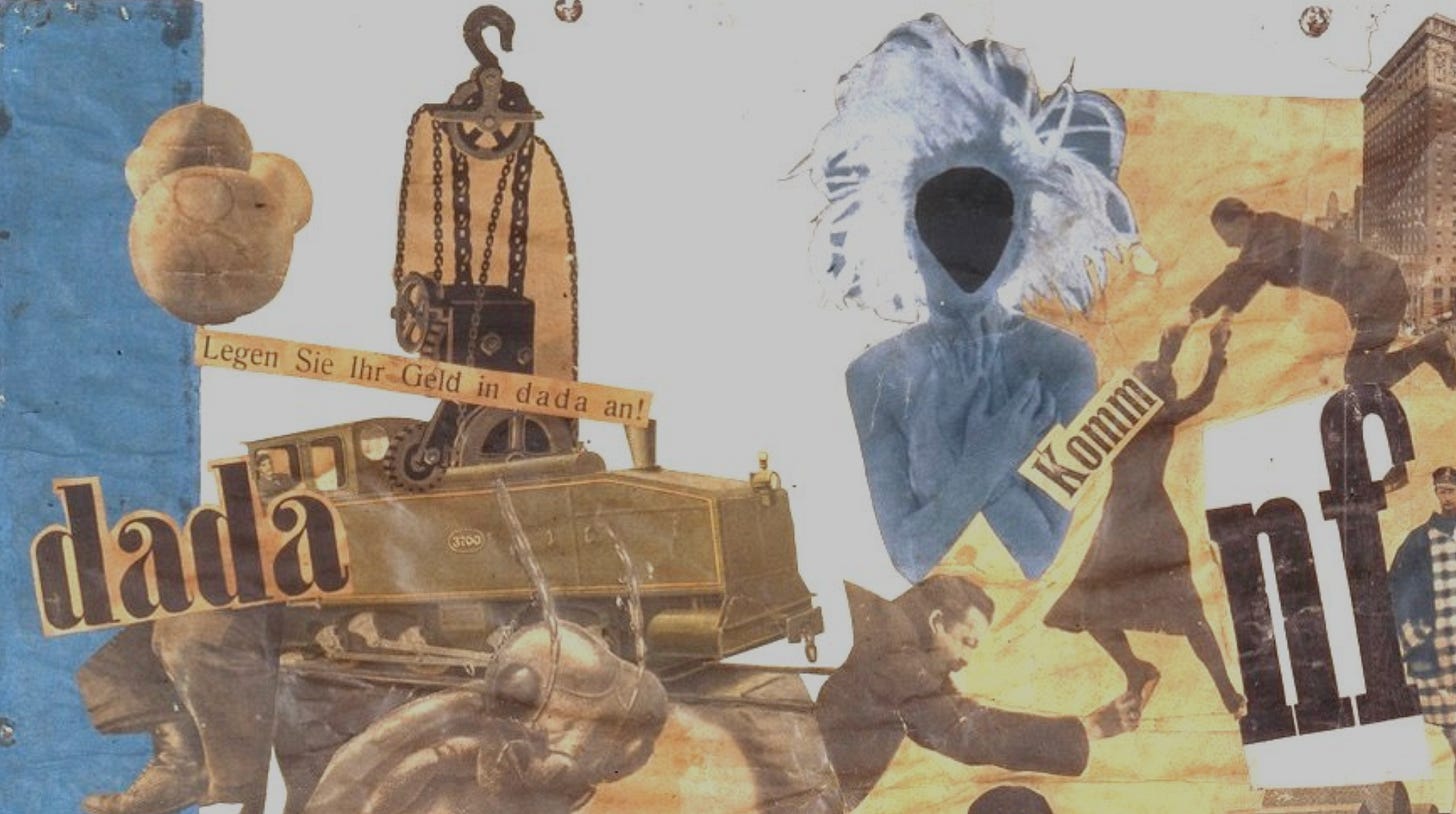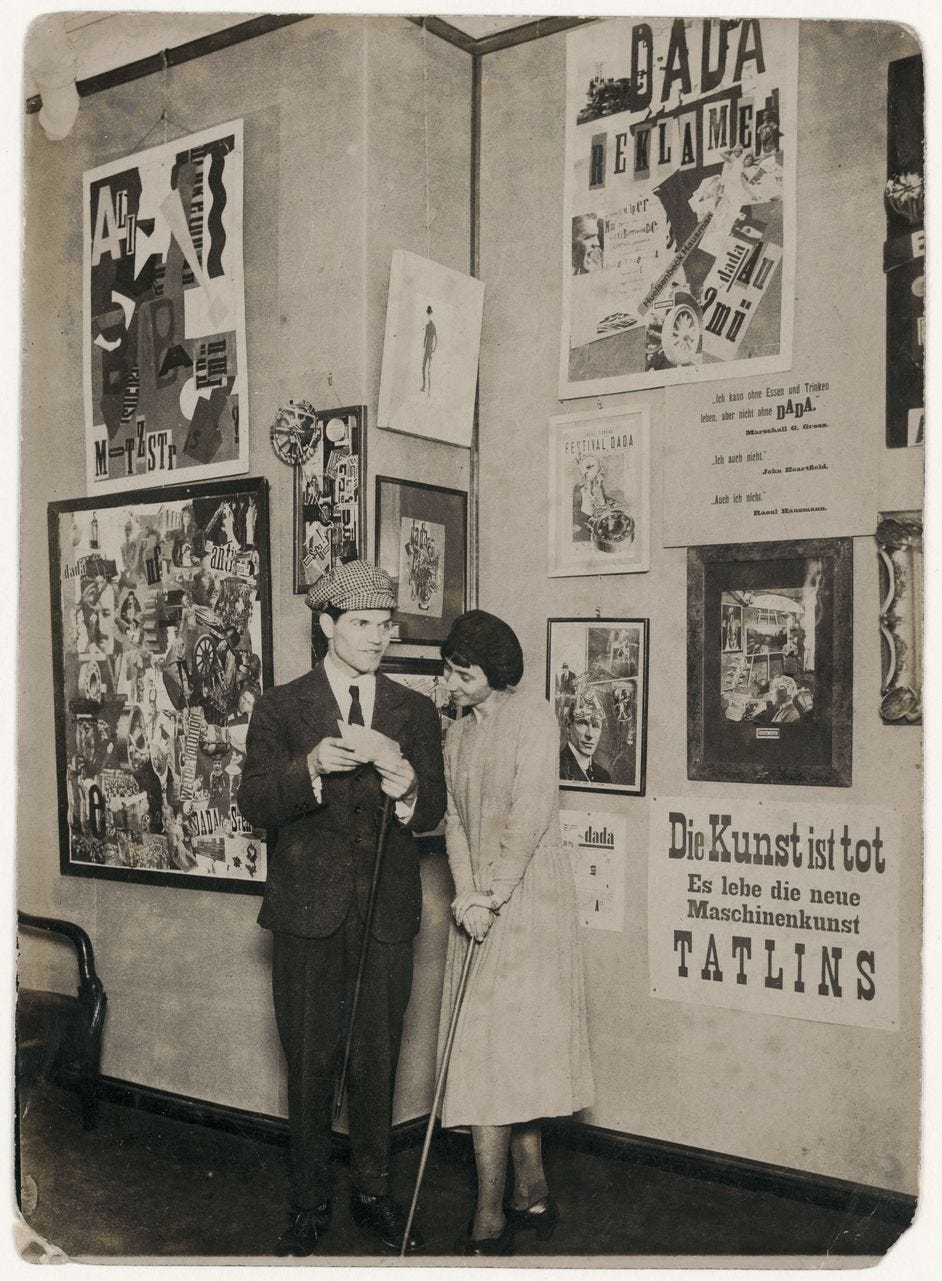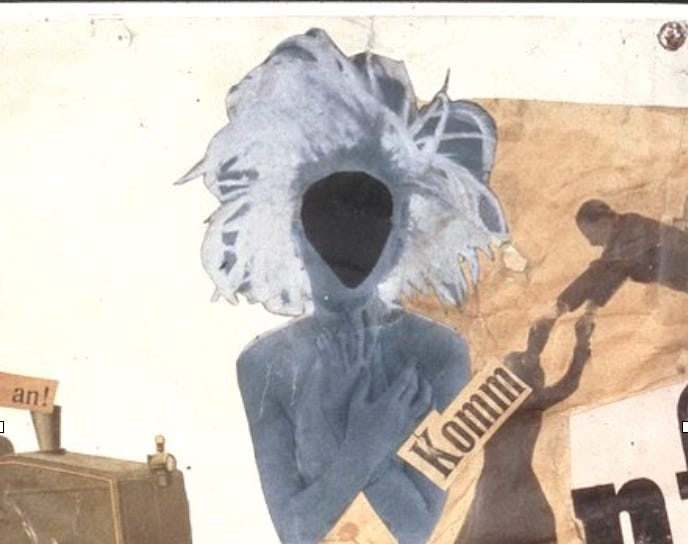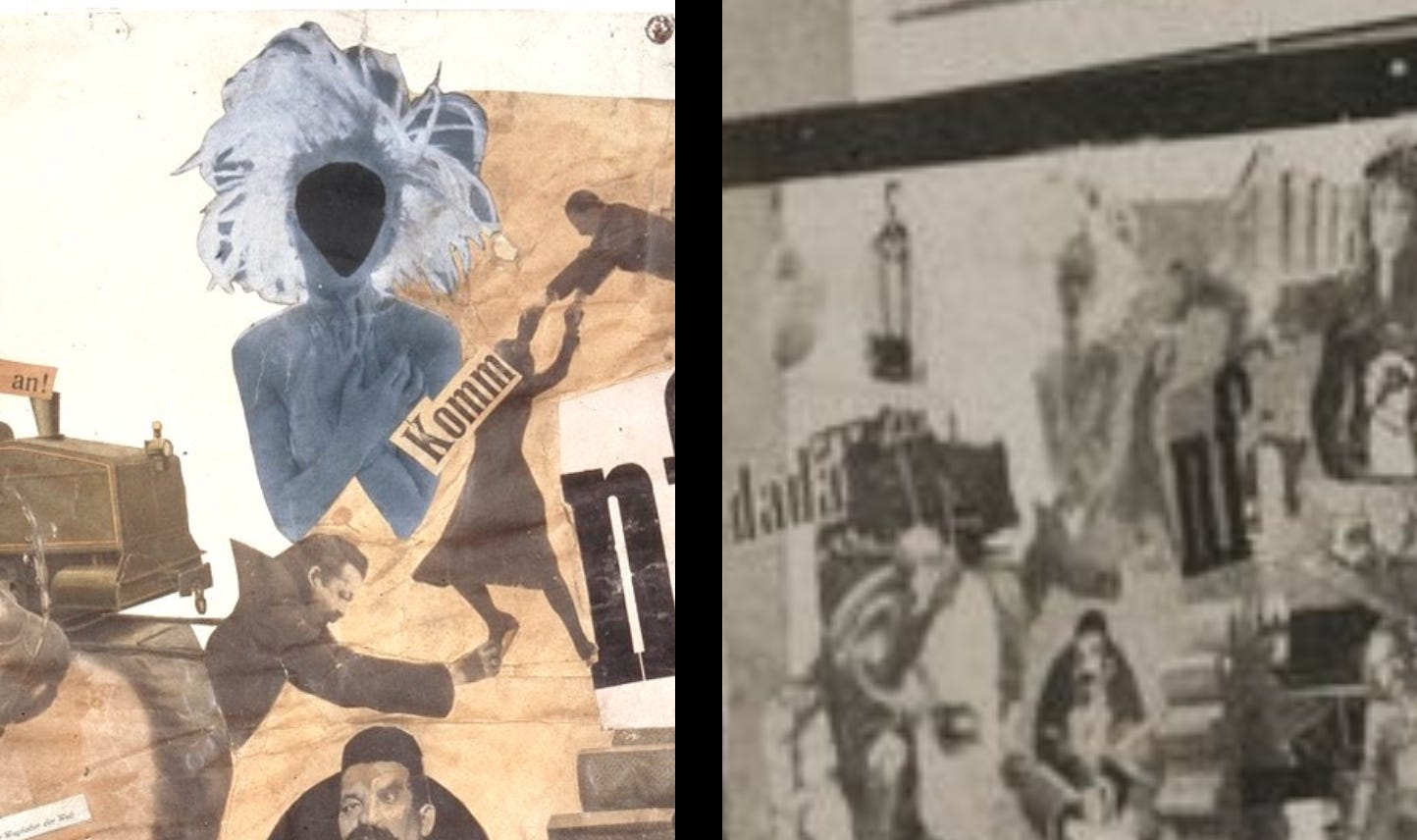ONE OF THE MOST FAMOUS IMAGES from Dada — at least the Berlin branch of it — is Hannah Höch’s photomontage Schnitt mit dem Küchenmesser… or, Cut With the Kitchen Knife Dada Through the Last Weimar Beer-Belly Cultural Epoch Germany, made around 1919-20.
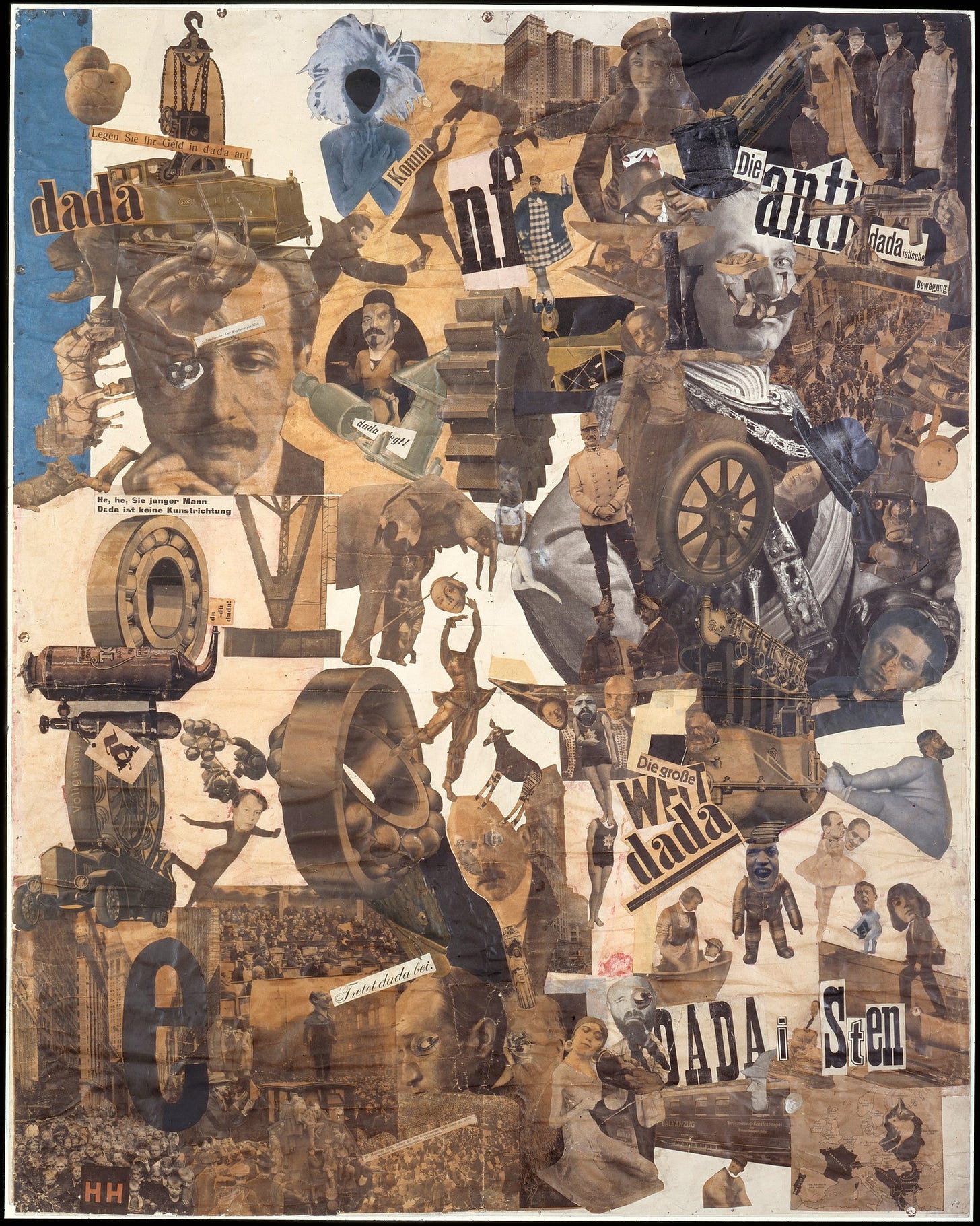
It is a cross-section of the times, a political attack on the Weimar Republic, and an assertion both of Dadaism as a political force, and of the role of women in German society — the so-called ‘Neue Frauen’.
Not a great deal is known about Berlin Dada, and only a few photographs remain of the exhibition they mounted in Berlin in the Summer of 1920, the ‘First International Dada Fair’. One of these shows Höch and her lover Raoul Hausmann rather innocently posing as visitors in front of their photomontages and collages.
The summer of 1920 was the Dada summer, with a Dada Festival at the Salle Gaveau in Paris, the exhibition Dada-Vorfrühling in Cologne, where visitors were invited to destroy a sculpture by Max Ernst with an axe (which they did enthusiastically), and also the opening of the Société Anonyme in New York, the first museum of contemporary art in America which had a strong Dada inflection.
Berlin however remained the epicentre of Dada, and Höch’s photomontage one of its most intriguing products.
Now, there is much to be said about Cut With the Kitchen Knife, and a fair amount published over the years. One detail that keeps catching my eye has, as far as I know, never been commented on. And the more my eye is caught, the more it seems to me the punctum, the central focus of the collage.
It is the woman at the top in cyanotype blue, with wild hair and a black shape covering her face.
She is quite out of keeping with the rest of the collage, and looks for all the world like she could have been lithographed by Andy Warhol, or painted by the contemporary painter Lisa Brice.
For the time being I am not sure what to make of her — perhaps she is simply a mysterious presence. What is even more intriguing is that if you look at the collage as it was displayed in 1920, in the photograph of Höch and Hausmann posing as visitors, you can see that the face is not covered with a black shape.
Höch must have done this at some point afterwards, along with a few other changes (which have been mentioned in the literature on the collage). Perhaps glue dried and bits fell off. In the case of the black shape, it seems clear that this has been deliberately stuck on to the surface of the collage, although without seeing it in the flesh it is impossible to say.
Perhaps there is nothing that can be said for sure about this figure, other than that she exerts a powerful and strange presence in the collage, and projects an air both of futurity and mystery. She is not particularly Dada but, as the Dadaists would be sure to say, therein lies her Dada.


